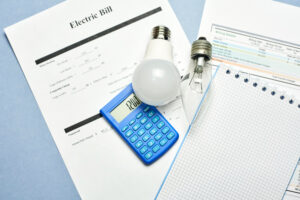Spring is here – so are solar powered lights
Last updated on March 10th, 2024 at 03:05 pm

Energy saving solar lights, like the ones pictured, have been around for quite a while. However, they haven’t really become mainstream until the past couple of years. Advances in solar technology and construction have made these lights much more economically feasible for the average homeowner.
Currently, the cost ranges between $20 and $60 per box or package of these lights. This means there is probably a solar lighting option that fits your budget nicely.
Why solar lights?
The advantages of independent solar lights are numerous. First, they are solar powered and require no connection to an energy source other than a sunny location.
Second, they are independently wired, meaning that if one light has a problem or “goes out” the rest in the chain still stay on. They are independently powered and thus are flexible enough to be placed anywhere you want (as long as there is sunshine for at least a few hours per day).
Third, advances in solar technology mean that a better quality solar cell can be placed in the lights. This means the units have to be exposed to less sunlight to produce energy. Thus, it isn’t strictly necessary to actually have the units in the direct sun for longer than 6 hours per day, which was the case previously.
Fourth, they are mostly maintenance free. Most solar lights have automatic timers built-in as photovoltaic cells which means they only turn on when the light reaches a certian level, for example, around dusk. Therefore they conserve their own energy.
Disadvantages
Of course, any solar light depends on solar radiation. Which means sunlight. Solar powered lights that do not rely on a central panel or “collection point” need to be in direct sunlight for a least a porton of the day. Since you probably won’t be moving them around, it means your placement choices are somewhat limited in both location and plant selection. In other words, you won’t want to place these lights near a plant or shrub that will grow big enough to block sunlight from reaching the light.
Also, while durable, they are certianly not indestructible. Often times the light casing is relatively string, but the stem / base that is put into the dround is plastic and brittle.. All too often the base or stake cracks easily, rendering the unit useless unless you have a relacement on hand.
Can the lights be put in wet locations?
For the most part, yes? They can’t be submerged in water (pools, ponds, etc) but they are weatherproofed. The stems can rest in sitting water just fine, since there is no current rnning through the stem. Usually, the whole power generation / light array rests in the top fourth of the unit.
What about solar spotlights?
Solar spotlights are available either as stand alone units, like the solar lights, or as part of a “line” that is physically connected to a small solar collector or panel. There is usually anywhere between 8 feet and 16 feet of wire between these spotlights. Unlike their individual counterparts, these lights have the luxury of being placed in more locations – not just in direct sunshine. The only item that needs to be in direct sunshine is the panel. However, you’re still limited to the length of the wire the separates the lights.



When I think of creative ways to save money on utilities, these solar powered lights do come to mind. However the costs ($20 and upwards each) do seem to strip out the savings of not using the good ‘ole wire and plug.
True, they are much easier to use, not need to dig in the ground to run the wires. And they do last a couple of years or so.
Suppose I do need to create a cost/savings comparison to see if it they are truly worth it coming from a strictly money savings issue.
I really like these lights for making my garden beautiful. Just because I am on a budget does not mean that I can’t have garden lights (because I see these on sale all the time), and since they don’t use electricity they are even more appealing to me.